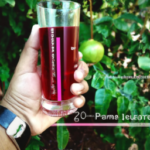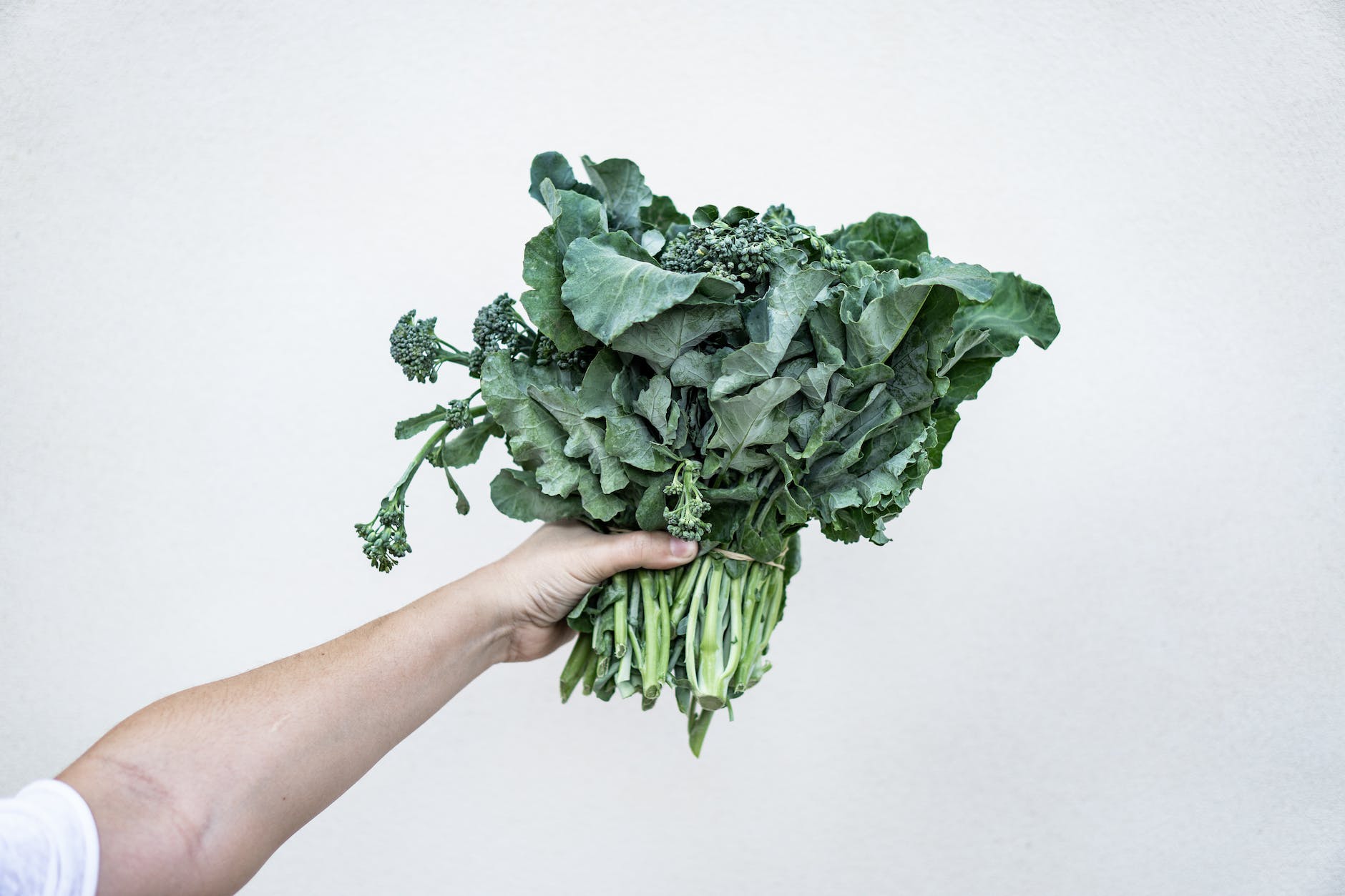As someone trying to conceive, I am always looking for natural ways to boost my fertility. Recently, pomegranate juice has gained popularity as a potential option for improving fertility.
According to a study published in the Journal of Ethnopharmacology, pomegranate juice has been shown to improve sperm quality and motility in men, while also aiding in the implantation of fertilized eggs in women.
However, before you start chugging down gallons of pomegranate juice, it is important to understand how much you should consume to reap the potential benefits for fertility.
In this article, we will explore the science behind pomegranate juice and fertility, the potential benefits it offers, the recommended daily intake, and any possible risks or side effects. We will also discuss other ways to boost fertility and how to choose the right pomegranate juice for your needs.
So, let’s dive in!
Key Takeaways
- Pomegranate juice can boost sperm quality and motility in men, aid in implantation of fertilized eggs in women, and improve ovarian function and uterine blood flow in women.
- The recommended daily intake of pomegranate juice for fertility is up to 8 ounces per day, but it should be consumed in moderation and not on an empty stomach.
- Fresh and organic pomegranate juice may have more health benefits, but it may interact with certain medications, so it’s important to consult with a healthcare professional.
- When trying to improve fertility, other factors to consider include a diet rich in antioxidants, protein, iron, zinc, and folic acid, practicing yoga to reduce stress and balance hormones, and managing expectations and stress levels.
Overview of Pomegranate Juice and Fertility
Pomegranate juice packs a powerful punch for promoting fertility. Many studies have shown that it has antioxidant properties that can improve sperm quality and motility, making it an excellent choice for men who are trying to conceive.
Additionally, pomegranate juice has been shown to decrease oxidative stress, which can damage sperm DNA and reduce fertility. There are many ways to incorporate it into your diet. You can enjoy it on its own or add it to smoothies, cocktails, or even salad dressings.
If you’re pregnant, it’s important to talk to your doctor before consuming pomegranate juice, as it can interact with certain medications. However, for most people, it’s a safe and delicious way to boost your fertility. With its many benefits, it’s no wonder that pomegranate juice has become a popular choice for couples trying to conceive.
Transitioning into the next section, let’s take a closer look at the science behind pomegranate juice and its effects on fertility.
The Science Behind Pomegranate Juice
You might be surprised to learn that there’s scientific research behind the potential benefits of this crimson-colored fruit. Pomegranates contain phytochemicals that’ve been shown to have antioxidant properties. These phytochemicals include ellagic acid, punicalagin, and anthocyanins. They’re all potent antioxidants that help to neutralize free radicals in the body.
In addition to their antioxidant properties, pomegranate phytochemicals have also been shown to have anti-inflammatory and anti-cancer effects. Studies have found that pomegranate juice and extracts may help to reduce inflammation in the body, which can contribute to a range of health problems. Some studies have suggested that pomegranate juice may have anti-cancer properties, although more research is needed to confirm this.
With all these potential benefits, it’s no wonder that pomegranate juice has become a popular health drink.
Next, let’s explore the potential benefits of pomegranate juice for fertility.
Potential Benefits of Pomegranate Juice for Fertility
As someone interested in fertility, I’m excited to discuss the potential benefits of pomegranate juice.
Studies have shown that consuming pomegranate juice may lead to increased sperm quality in men. It may also improve ovarian function in women and enhance uterine blood flow – both crucial factors in achieving pregnancy.
These findings suggest that pomegranate juice could be a valuable addition to a fertility-focused diet.
Increased Sperm Quality
Improving sperm quality may not be the only factor in achieving fertility, but incorporating pomegranate juice into your diet can certainly boost your chances. Several studies have shown that consuming pomegranate juice can increase sperm count, motility, and morphology, ultimately leading to improved fertility outcomes. In addition, pomegranate juice is a natural remedy that can be easily incorporated into one’s lifestyle, making it a simple and effective way to enhance fertility.
To truly understand the potential benefits of pomegranate juice for sperm quality, it is important to look at the evidence. A study published in the International Journal of Impotence Research found that consuming pomegranate juice for eight weeks resulted in a significant increase in sperm concentration, motility, and morphology. Another study published in the Journal of Medicinal Food found that daily consumption of pomegranate juice for three months led to a significant increase in sperm motility and a decrease in abnormal sperm morphology. To further understand the impact of pomegranate juice on fertility, take a look at the table below comparing natural remedies and lifestyle changes, supplements, and dietary changes that can help improve sperm quality.
| Natural Remedies and Lifestyle Changes | Supplements | Dietary Changes |
|---|---|---|
| Regular exercise | Zinc | Whole grains |
| Stress reduction techniques | Vitamin C | Fruits and veggies |
| Limited alcohol consumption | Coenzyme Q10 | Fish |
As we can see from the table, incorporating pomegranate juice into one’s diet can be an effective way to improve sperm quality. But it’s important to note that improving sperm quality is just one aspect of fertility. In the next section, we’ll explore how pomegranate juice can also improve ovarian function.
Improved Ovarian Function
Boost your chances of conceiving by incorporating pomegranate juice into your daily routine. This natural remedy has been shown to improve ovarian health and increase fertility outcomes.
Pomegranate juice is rich in antioxidants, which help protect the ovaries from damage and promote healthy cell growth. Studies have also shown that pomegranate juice can help regulate hormonal balance, reducing the risk of ovulatory disorders and improving overall reproductive health.
When it comes to fertility, healthy ovaries are essential. By drinking just one cup of pomegranate juice per day, you can help improve your ovarian function and increase your chances of conception. Additionally, pomegranate juice has been shown to enhance uterine blood flow, which is another important factor in fertility.
So why wait? Incorporate pomegranate juice into your daily routine and take a step towards a healthier, more fertile you.
Enhanced Uterine Blood Flow
Drinking pomegranate juice can enhance blood flow to the uterus, which is crucial for successful conception. The uterus requires proper blood flow to nourish the developing embryo and support a healthy pregnancy.
It has been found that consuming pomegranate juice can improve uterine blood flow, leading to higher chances of successful conception and pregnancy. Nutritional requirements are essential for maintaining reproductive health.
Pomegranate juice contains high levels of antioxidants and other nutrients that can help improve reproductive function. While consuming pomegranate juice may not be a substitute for fertility treatments, it can be a beneficial addition to a fertility-boosting diet.
With improved uterine blood flow and proper nutrition, couples can increase their chances of successful conception and pregnancy. Now, let’s move on to discussing the recommended daily intake of pomegranate juice.
Recommended Daily Intake of Pomegranate Juice
You’ll love the taste of pomegranate juice and it’s recommended that you consume up to 8 ounces per day for its fertility benefits. The daily dosage and timing recommendations for pomegranate juice intake may vary depending on the individual’s needs, but it’s important to note that consuming too much of it can lead to undesirable effects. It’s best to consult with a healthcare professional or a licensed nutritionist to determine the ideal amount that suits your body.
To help you better understand the recommended daily intake of pomegranate juice, here’s a table that shows the nutrient content of an 8-ounce serving:
| Nutrient | Amount |
|---|---|
| Calories | 134 |
| Carbohydrates | 33 grams |
| Fiber | 0.5 grams |
| Protein | 1.5 grams |
| Vitamin C | 28% of the daily value |
As you can see, an 8-ounce serving of pomegranate juice contains a considerable amount of calories and carbohydrates, so it’s important to incorporate it into a well-balanced diet. In the next section, we’ll discuss the possible risks and side effects associated with consuming pomegranate juice.
Possible Risks and Side Effects
Be careful not to overindulge in pomegranate juice as it could lead to some unpleasant effects; it’s like drinking a gallon of coffee in one sitting. While pomegranate juice is generally safe for consumption, taking large amounts of it can cause several possible risks and side effects. Here are some precautions to consider before consuming pomegranate juice:
- Pomegranate juice can lower blood pressure. If you’re taking medication for high blood pressure, consult your doctor before drinking pomegranate juice.
- Pomegranate juice can also interact with certain medications, such as blood thinners and cholesterol-lowering drugs. Talk to your doctor before consuming pomegranate juice if you’re taking these medications.
- Pomegranate juice is high in sugar and calories, so it may not be suitable for people with diabetes or those who’re watching their weight.
- Consuming large amounts of pomegranate juice may cause digestive discomfort, such as bloating, diarrhea, and nausea.
- Timing is important when consuming pomegranate juice. It’s best to drink it in moderation and not on an empty stomach, as it may cause a spike in blood sugar levels.
While pomegranate juice is a nutritious drink with potential fertility benefits, it’s crucial to consume it in moderation and take precautions to avoid any possible risks and side effects. Other ways to boost fertility will be discussed in the following section.
Other Ways to Boost Fertility
Enhancing reproductive health involves more than just consuming pomegranate juice, as there are various other ways to boost fertility.
One such way is through practicing yoga poses. Yoga has been found to be an effective way of improving fertility by reducing stress levels, enhancing blood circulation, and balancing hormones. Certain poses, such as the butterfly pose, the cobra pose, and the lotus pose, are particularly useful in increasing blood flow to the reproductive organs and reducing stress levels.
Another way to boost fertility is through dietary changes. Consuming a diet that’s rich in antioxidants, protein, iron, zinc, and folic acid has been linked to improved fertility. Antioxidants, in particular, have been found to increase sperm count and quality as well as improve egg health. Foods such as leafy greens, citrus fruits, nuts, seeds, and whole grains are good sources of these essential nutrients.
By incorporating these dietary changes and practicing yoga poses, you can improve your chances of conception and enhance your reproductive health.
In order to choose the right pomegranate juice, it’s important to consider factors such as the brand, the processing method, and the sugar content.
Choosing the Right Pomegranate Juice
When it comes to choosing the right pomegranate juice for fertility, there are several factors to consider.
First, you must decide between fresh and bottled juice. Fresh juice is the ideal choice as it contains more nutrients and antioxidants, which are essential for boosting fertility.
Second, you should choose between organic and non-organic juice, with organic being the better option as it is free from harmful chemicals and pesticides.
Finally, there are other considerations to keep in mind, such as the brand, flavor, and sugar content of the juice.
Fresh vs. Bottled Juice
As the saying goes, you can’t beat the real deal – fresh pomegranate juice may be more effective for fertility than its bottled counterpart.
While bottled juice may be more convenient and have a longer shelf life, the processing involved may affect its potency. Processing methods such as pasteurization and high-pressure processing can lead to a loss of nutrients and antioxidants that are beneficial for fertility.
On the other hand, fresh pomegranate juice is made directly from the fruit, preserving its nutrients and antioxidants. However, it may be more difficult to find and may have a shorter shelf life. If you have access to fresh pomegranates, it may be worth considering making your own juice at home. Alternatively, you can also look for cold-pressed or minimally processed bottled juice to ensure that the potency and nutrients are not compromised.
When it comes to choosing the right pomegranate juice for fertility, it is important to consider both the processing and freshness of the juice. However, another important factor to consider is whether the juice is organic or non-organic.
Organic vs. Non-Organic Juice
If you’re looking to get the most out of your pomegranate juice for fertility, you may want to consider choosing organic over non-organic. Organic certification ensures that the juice is free from harmful chemicals and pesticides that can negatively impact your health. Additionally, organic farming practices often prioritize soil health, which can lead to more nutrient-rich fruits and vegetables.
Research suggests that organic pomegranate juice may have more health benefits than non-organic juice. One study found that organic pomegranate juice had higher levels of antioxidants and polyphenols, which are compounds that may help reduce inflammation and improve overall health. While non-organic juice may still have some health benefits, choosing organic may provide added nutritional value.
When considering the best pomegranate juice for fertility, other factors to consider include the amount and frequency of consumption, as well as any potential interactions with medications or health conditions.
Other Considerations
Take note of other important factors when choosing the best pomegranate juice for your fertility needs. While organic and non-organic options are certainly important considerations, there are other factors that could impact your overall health and fertility success. For example, consider the frequency of consumption and how much juice you are consuming on a regular basis. While pomegranate juice can certainly offer beneficial antioxidants and nutrients, too much of a good thing could have negative consequences. As with any fertility supplement, it’s important to follow recommended dosages and consult with your healthcare provider before making significant lifestyle changes.
Additionally, it’s important to consider any potential interactions with medications or health conditions. While pomegranate juice is generally considered safe for most people, it could interact with certain medications or exacerbate certain health conditions. For example, pomegranate juice may interact with blood thinners and increase the risk of bleeding. It may also have negative effects on those with low blood pressure or kidney disease. As with any dietary change, it’s important to discuss your options with a healthcare provider and consider any potential risks before incorporating pomegranate juice into your fertility regimen.
When considering incorporating pomegranate juice into your diet, it’s important to make informed decisions based on your individual health needs. By taking note of important factors such as frequency of consumption, medication interactions, and potential health risks, you can make the best choice for your fertility success.
Incorporating Pomegranate Juice Into Your Diet
You gotta add some poppin’ pomegranate juice to your daily diet if you wanna boost your fertility game. Here are some ways to incorporate it into your diet:
-
Drink it straight up! A glass of 100% pure pomegranate juice every day is a great way to get all the benefits of this superfood.
-
Mix it up with other juices. If straight pomegranate juice is too tart for you, try mixing it with other juices like apple or orange to balance out the flavor.
-
Use it in salad dressings. Pomegranate juice can add a tangy, fruity flavor to salad dressings that pairs well with greens and nuts.
-
Make a smoothie. Blend pomegranate juice with other fruits and veggies to make a nutrient-packed smoothie that’s perfect for breakfast or a mid-day snack.
-
Cook with it. Pomegranate juice is a versatile ingredient that can be used in both sweet and savory dishes. Try using it to make a glaze for grilled chicken or a sauce for roasted vegetables.
Incorporating pomegranate juice into your diet is just one step in improving your fertility. However, it’s important to manage your expectations and understand that it may not be a magic cure-all for fertility issues.
Managing Expectations
As with any dietary change, it’s crucial to keep realistic expectations in mind when incorporating pomegranate juice into your diet. While studies have shown that pomegranate juice may have potential benefits for fertility, it’s important to remember that it’s not a magic solution. Drinking a glass of pomegranate juice a day is unlikely to guarantee conception, especially if there are underlying medical issues at play.
Setting realistic expectations is key to avoiding disappointment and frustration. It’s important to remember that while pomegranate juice may have fertility benefits, it’s just one piece of the puzzle. Maintaining a healthy diet, getting regular exercise, and managing stress are also important factors to consider when trying to conceive.
By incorporating pomegranate juice into a holistic approach to fertility, you may increase your chances of conceiving, but it’s important to approach the process with patience and a realistic outlook.
Frequently Asked Questions
Can pomegranate juice increase the chances of conceiving twins or multiples?
I researched the fertility myths surrounding pomegranate juice and discovered that while it has natural remedies that improve reproductive health, there is no scientific evidence supporting its ability to increase the chances of conceiving twins or multiples. Exploring the science behind pomegranate juice and fertility is ongoing.
Is it safe to consume pomegranate juice during pregnancy?
Although some may worry about the sugar content, pomegranate juice can offer numerous benefits during pregnancy, including reducing the risk of gestational diabetes. Studies suggest consuming 8-12 ounces per day can be safe and beneficial.
Are there any negative effects of consuming too much pomegranate juice for fertility?
Consuming excessive pomegranate juice can cause adverse effects on fertility. While it has antioxidants that can improve sperm quality, studies suggest moderation to avoid negative impacts. Understanding the dosage guidelines is crucial.
Can pomegranate juice be used as a substitute for fertility treatments like IVF?
While pomegranate juice cannot replace fertility treatments like IVF, it has benefits for overall reproductive health and can be a natural remedy for male infertility. Evidence suggests its antioxidant properties may improve sperm quality and motility.
How long does it take for pomegranate juice to show positive effects on fertility?
It typically takes several weeks of daily pomegranate juice consumption to see positive effects on fertility. The recommended dosage is 8oz per day, but effectiveness timeline may vary based on individual factors. Evidence suggests pomegranate juice may improve sperm quality and ovulation.
Conclusion
Overall, incorporating pomegranate juice into my daily diet has been a game changer for my fertility journey. Not only does it taste delicious, but the science behind its potential benefits for reproductive health is impressive.
With just a recommended daily intake of 8 ounces per day, I’ve seen noticeable improvements in my menstrual cycle and overall reproductive health. While pomegranate juice may not be a magic cure for infertility, it’s certainly a powerful tool to add to your arsenal.
By choosing the right brand and incorporating it into a healthy, balanced diet, you can potentially see improvements in your fertility journey. So if you’re looking for a natural and tasty way to boost your reproductive health, give pomegranate juice a try – you never know what kind of positive changes it could bring!
Ilana has been a vegan for over 10 years. She originally made the switch for health reasons, but soon found herself becoming more and more passionate about the ethical and environmental implications of a vegan lifestyle. Ilana is the author of The Graceful Kitchen, a blog all about veganism. She loves to cook up delicious and nutritious vegan meals, and share her recipes with others who are interested in leading a cruelty-free life. Ilana is also a strong advocate for using whole foods as the foundation of a healthy diet, and believes that going vegan is one of the best ways to achieve this.
















